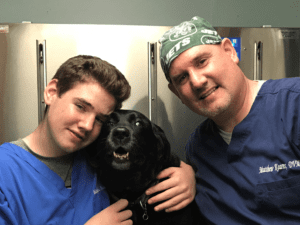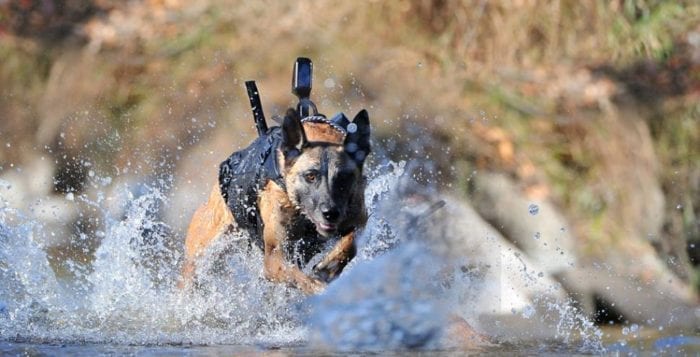By Matthew Kearns, DVM
 I recently watched the movie “Megan Leavey” and realized that although recent events have forced many Americans to take sides on loyalty to First Amendment rights versus loyalty to the flag (as it stands for the sacrifice the military, police and rescue services make on our behalf), one belief is united: Man’s best friend has always been there for us, especially in times of war.
I recently watched the movie “Megan Leavey” and realized that although recent events have forced many Americans to take sides on loyalty to First Amendment rights versus loyalty to the flag (as it stands for the sacrifice the military, police and rescue services make on our behalf), one belief is united: Man’s best friend has always been there for us, especially in times of war.
A quick review of dogs in the military reveals that their use goes as far back as the Egyptians (as seen in ancient murals) for both offensive and defensive purposes. The ancient Greeks, Romans, Attila the Hun, Spanish conquistadors, Napoleon and Frederick the Great all used dogs during times of war. These war dogs were unleashed on their enemies, used to guard prisoners and even to carry packs with supplies and messages.
In World War I dogs were used by the Germans to help the wounded on the battlefield. The Sanitatshunde, or “sanitary dogs” would head out onto battlefields in search of wounded soldiers. These brave dogs not only carried water and medical supplies to the wounded but also returned and guided soldiers to their injured comrades. One of the most famous American dogs, Rin Tin Tin, was actually rescued from a German training kennel by an American soldier at the end of the war.
The United States started incorporating dogs into the military services beginning in World War II. In 1942, the American Kennel Club and private citizens (including breeders and trainers) established the Dogs for Defense (DFD) organization. Later that year, the DFD was taken over by the U.S. Army Quartermaster. The dogs in the DFD were initially used for domestic sentry duty, but their role was quickly expanded to search and rescue, hauling, scouting and carrying messages. By 1944, thousands of military service dogs were used in the islands of the South Pacific and across Europe to help turn the tide of the war.
During the Korean War military dogs and handlers would routinely lead patrols to alert the troops of the possible presence of the enemy. This was expanded during the Vietnam War into what were termed Combat Tracking Teams (CTT).
The CTT consisted of a military dog, handler, team leader, visual tracker and radio operator. The job of this special unit was to make contact with the enemy, as well as detect any recent enemy activity in the area. Around this time the military also realized the canine’s sensitive sense of smell could be used for more than detecting the enemy. In 1971, programs were developed to teach military dogs to detect both bomb materials and narcotics. After the war U.S. Customs found these drug-sniffing dogs invaluable.
As recently as 2011 a military dog named Cairo (in photo above) was used in the SEAL team Operation Neptune Spear (which was responsible for killing Osama bin Laden). Today, military dogs are used in all capacities previously described. There are an estimated 600 military dogs on active duty right now in Afghanistan and Iraq. So, let’s tip our hats to these true American heroes.
Dr. Kearns practices veterinary medicine from his Port Jefferson office and is pictured with his son Matthew and his dog Jasmine.





